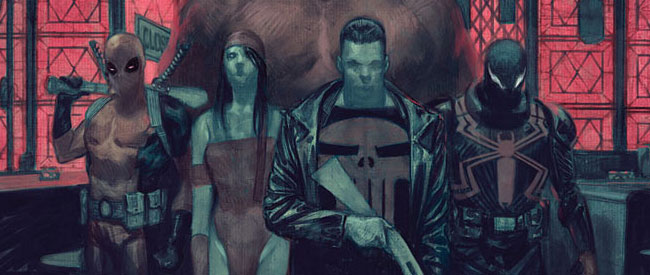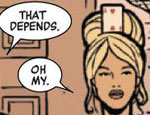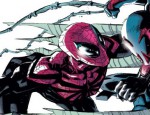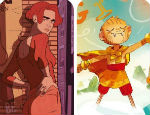Now that Daniel Way and Phil Noto have left the Thunderbolts, the reigns are in the hands of Charles Soule and Jefte Palo.
Way’s high-tension tales of intrigue, espionage, and dysfunctional group dynamics are replaced with an action-oriented team book that has a stronger focus on comedic moments and superheroics. This is a great jumping on point for new readers, but existing Thunderbolts fans might want to brace themselves for a change.
One clear example of this is the way that the two writers use Deadpool.
Deadpool appeared in Rick Remender’s Uncanny X-Force and Way’s Thunderbolts, as a gritty and sarcastic but rationally speaking character. He’s been the creepy, awkward, dangerous admirer bothering the Punisher and Elektra. People understood him and he stayed within the bounds of his story, which was a drastic departure from the characterization of Deadpool used in most of his other appearances, including his video game and his own ongoing title.
Way used Deadpool’s insanity in the background to raise anxiety and apprehension in the team, while Soule brings Deadpool to the forefront of the narrative with wacky antics and physical comedy.
Additionally, the artistic storytelling is markedly different. The most noticeable is the frequent usage of General Ross in his human form rather than his Red Hulk form. A small change, to be sure, but one that does serve to lessen the tension. After all, things never seem to be as tense as when there’s a Hulk in the room. Also, the Way used a lot of silent moments with body language and expressions to convey ideas to the reader while Soule tends to use lots of exposition.
As a book that was heavily rooted in quasi-real world murky issues (like empowering militant guerillas to overthrow a tyrannical dictator to serve American interests), Thunderbolts thrived on grit and gray areas. Villains acted as heroes and heroes acted villainous. The group fought terrorists and tackled a war of ideas. This story is a little less gray: The Punisher enlists the Thunderbolts to go after mob bosses. There is a lot of cooperation between characters and the only group conflict presents itself explicitly in the dialogue between characters.
The choice to bring this team into the Infinity tie-in is a strange one as well. While readers will have to wait until the next issue to see how Thanos’s invasion affects our anti-heroes, you cannot help but wonder whether the moral ambiguity will be lost when an obviously ‘bad’ enemy comes to town. The change could be good as well. This team is extremely well-suited to down and dirty close-quarters fighting, and we may get some amazing moments from that.
Thunderbolts takes a big step towards being a mainstream team book, and that may cause readers who were uncomfortable with the Game of Thrones-ian complicated plot of the Way era to reconsider adding the book to their monthly reading list.
Charles Soule (W), Jefte Palo (A) • Marvel Comics, $2.99, August 21, 2013
















Great review. I think Charles Soule is doing a fantastic job. Jefte Palo on the other hand is not. His art has gone down hill since his Black Panther run. I hope that Phil Noto returns in the rotation.